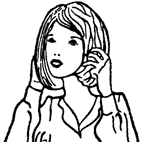I think I’ve ragged on Wandelweiser a few times recently, finding fault with its apparent sense conformity and complacency. It’s not completely true, of course, and as it happens I was just sent a copy of the new Edition Wandelweiser release West Coast Soundings, a double CD which makes an excellent case for the whole Wandelweiser aesthetic and the musical thinking behind it.
This album was crowdfunded last year under the name “Cage’s Grandchildren” (this title still comes up in the CD metadata). It might well have also been called “Tenney’s Children”: James Tenney is the only featured composer from a preceding generation, and his Harmonium #1 dates from 1976 while all the other works are less than 10 years old. Most of the composers here studied with Tenney, or at Cal Arts. Harmonium #1 isn’t the point of origin for all the music here and the album makes no such claim, but the work appears later on Disc 1 as a touchstone for this genre of music.
Like John Cage, Tenney produced a bewilderingly diverse body of work which opened up so many potential new paths of discovery. West Coast Soundings takes Harmonium #1 as a reference point for one particular set of ideas: a focus on the qualities of sound itself as a subject, listening in the present without narrative context, an emphasis on process and structure, but aimed towards elaboration of the sonic content, not teleological development.
Having complained about Wandelweiser’s output getting too samey, this collection is beautifully varied and balanced, presenting different facets of the above mentioned musical concerns while still maintaining an overall mood. I’ve played it in various situations and, for twelve pieces over two hours, surprisingly it’s never felt like an endurance test. More “typical” works – long-held tones blending together, a gentle but implacable aimlessness – are given a distinct identity by being thrown into contrast against music like the sinuous electronic drone of Chris Kallmyer’s Between the Rhine and Los Angeles. Liam Mooney’s 180°, in which performers press triangles against dry ice, recalls Cage’s interest in finding new sounds, Tenney’s percussion music, sound sculpture and Fluxus happenings.
The smaller, slighter works play an important role. Mark So’s brief segue makes a mysterious introduction to the album, with cellist Anton Lukoszevieze acting as the text’s reciter. Casey Anderson’s possible dust can’t add more to Cage’s works for multiple radios, but is sequenced here as a distinctive palate cleanser before Michael Pisaro’s quietly powerful A single charm is doubtful (Gertrude Stein).
After being disappointed with Catherine Lamb’s material/highlight last month, I was very pleased to find her piece Frame for Flute the highlight of the two CDs. Written for (not so fast!) grand bass recorder and cello, the two instruments echo off each other. The sonorous notes played by Lukoszevieze and recordist Lucia Mense merge and diverge, creating rich but subtle differences in tone that often sound as though they were electronically manipulated.
Brian Olewnick’s blog gives a good summary of all the pieces played and who plays them. West Coast Soundings turns out to be one of the best kind of surprises, one that is satisfying instead of sensationalistic, when you were only expecting more of the same.
